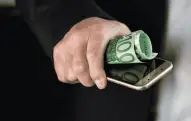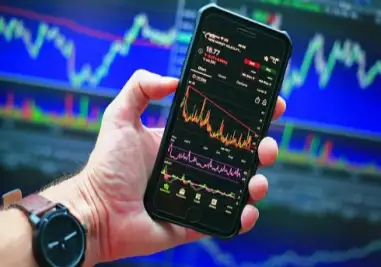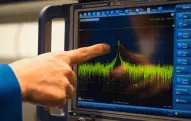US inflation rate above eight percent for the first time in 40 years
The last time prices rose as dramatically as they are now, a certain Ronald Reagan was reigning in Washington. Olivia Newton-John, now 73, topped the pop charts, and Tom Brady, perhaps the greatest U.S. athlete of all time, was in kindergarten. A good four decades ago now, since then there hasn't been a single month in the United States when the inflation rate showed a seven or even an eight before the decimal point. Until this Tuesday: the Bureau of Labor Statistics in Washington reported that U.S. consumer prices rose 8.5 percent in March from the previous month. That was four times the government's desired rate and, see above, the largest increase since December 1981. In February, the inflation rate had already been 7.9 percent.
This continues a trend that has caused great unrest among America's citizens and businesses, will further tarnish the reputation of President Joe Biden and is likely to prompt the U.S. Federal Reserve (Fed) to make further, this time significant, key interest rate hikes in the coming months. Quite a few experts believe that the monetary guardians will raise their most important key rate, the so-called overnight target range, by half a percentage point each at their next regular meetings in early May and mid-June. The corridor, which had been close to zero for two years to combat the Corona recession, would thus be back at 1.25 to 1.5 percent by the beginning of next summer. Low key interest rates tend to stimulate the economy, while higher rates are intended to slow the economic upswing and prevent prices from overheating.
Gasoline, rents and foodstuffs in particular became more expensive in March. One of the main causes of the price increase is the Russian invasion of Ukraine, which has made oil, gas, coal, agricultural goods and raw materials massively more expensive. Added to this are high sickness rates, output restrictions and other restrictions as a result of the Corona pandemic, which continue to lead to production losses and massive supply problems around the globe. In particular, the situation in China, where the spread of the highly contagious Omicron variant is increasingly challenging the previous zero-Covid strategy of President Xi Jinping's government, is a concern for many businesses, politicians and central bankers. Last week, nearly 200 million people - representing tens of millions of industrial workers - were barred from leaving their homes by order of local authorities in the People's Republic.
The question now is whether the upward trend in prices will continue or whether the Fed will succeed in breaking the trend. Some U.S. economists believe that the inflation trend may have peaked at the rate of 8.5 percent in March, but will remain at a similar level for quite some time. Not until the fourth quarter of this year do experts expect a decline to an average of 5.7 percent - a figure that would still be far above the ideal value of two percent that the Fed is actually aiming for. The reason for this is that key interest rate decisions always have an impact on the decisions of industry, trade, service providers and other sectors of the economy only after a delay of six to nine months.
Moreover, if the central bank were to raise interest rates much more aggressively, it would constantly run the risk of overreaching, stalling the recovery and plunging the economy into recession. Accordingly, Biden's chief economic advisor Brian Deese acknowledged in a television interview at the beginning of the week that the U.S. economy was "in rough waters" given the situation in Ukraine and China. However, he did not want to hear about an impending recession. If there is one country in the world, Deese said, that is in a better position than all other major economies to master this difficult situation, "it is the United States."
Image by Kevin Campbell









































